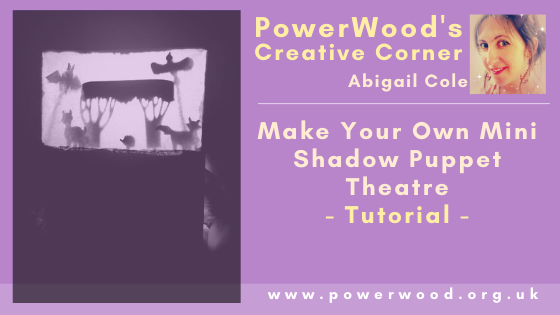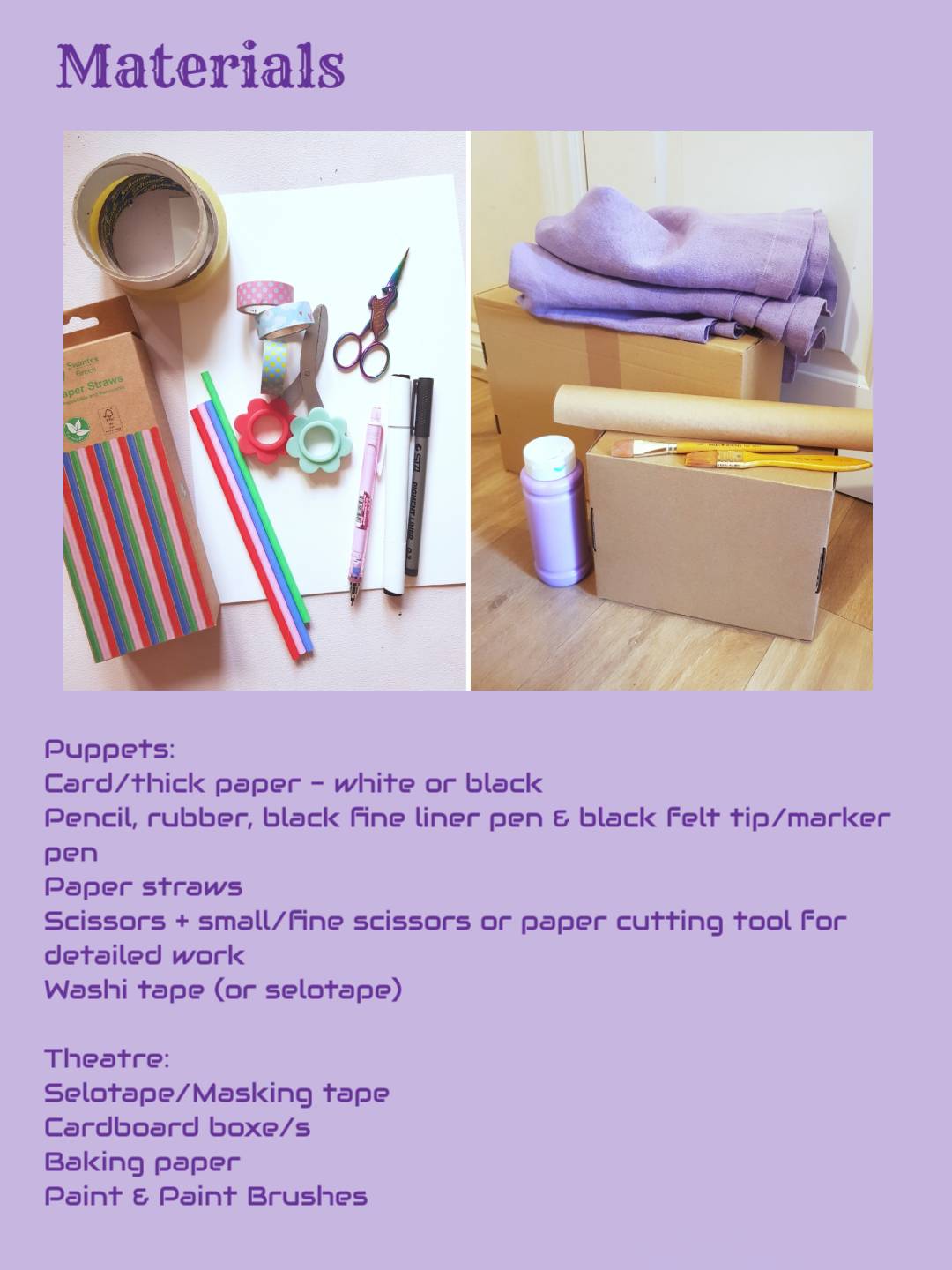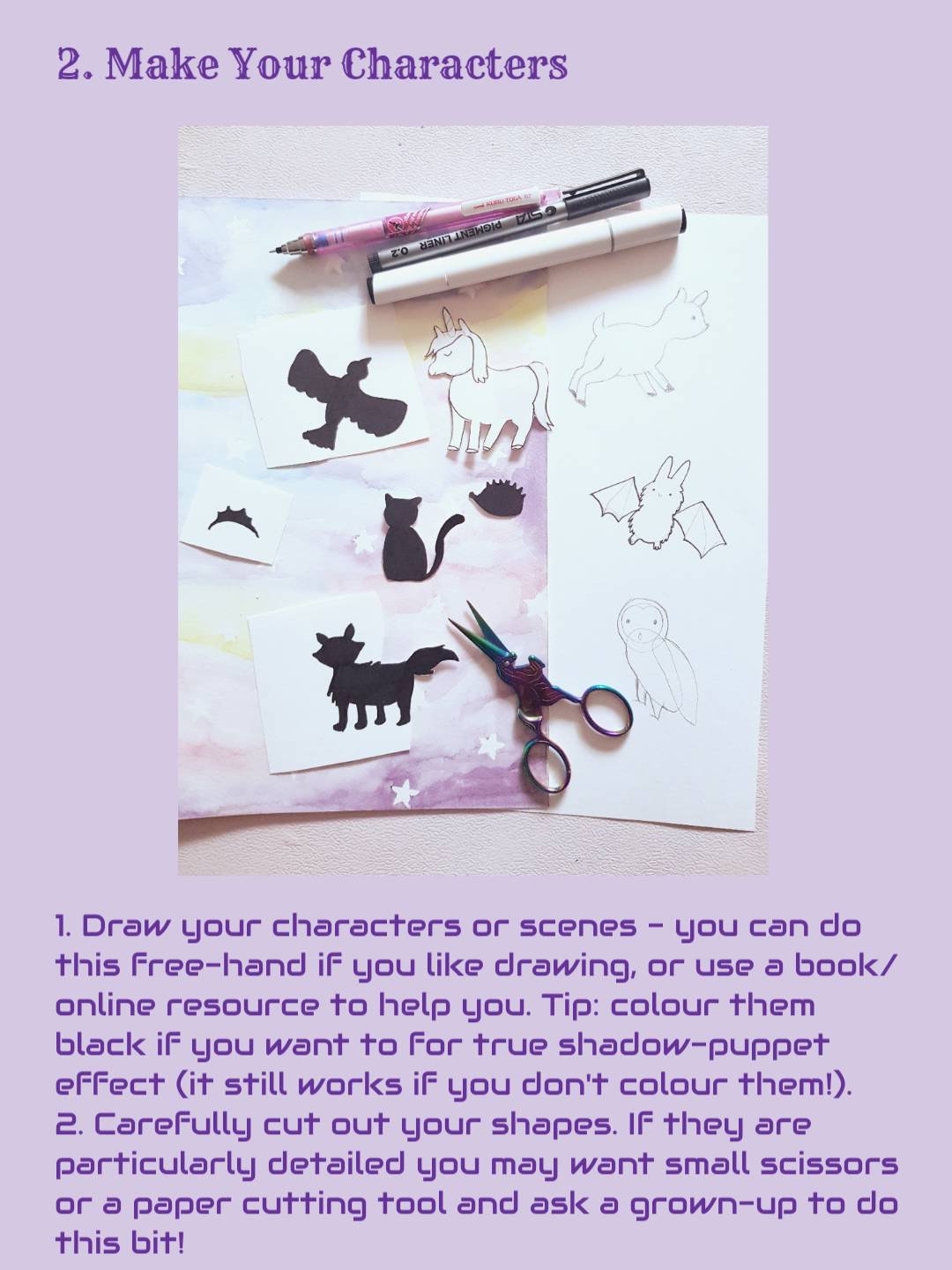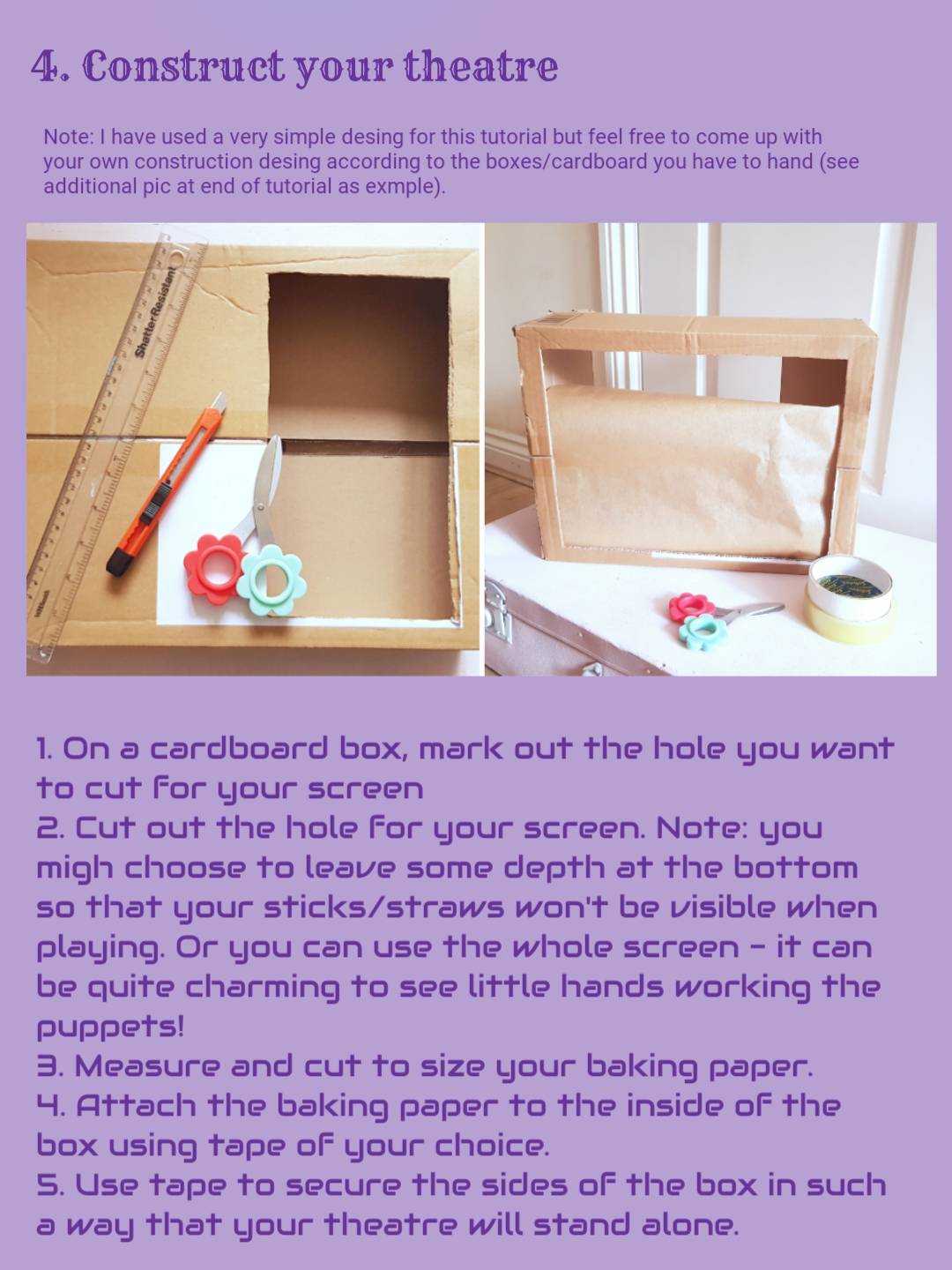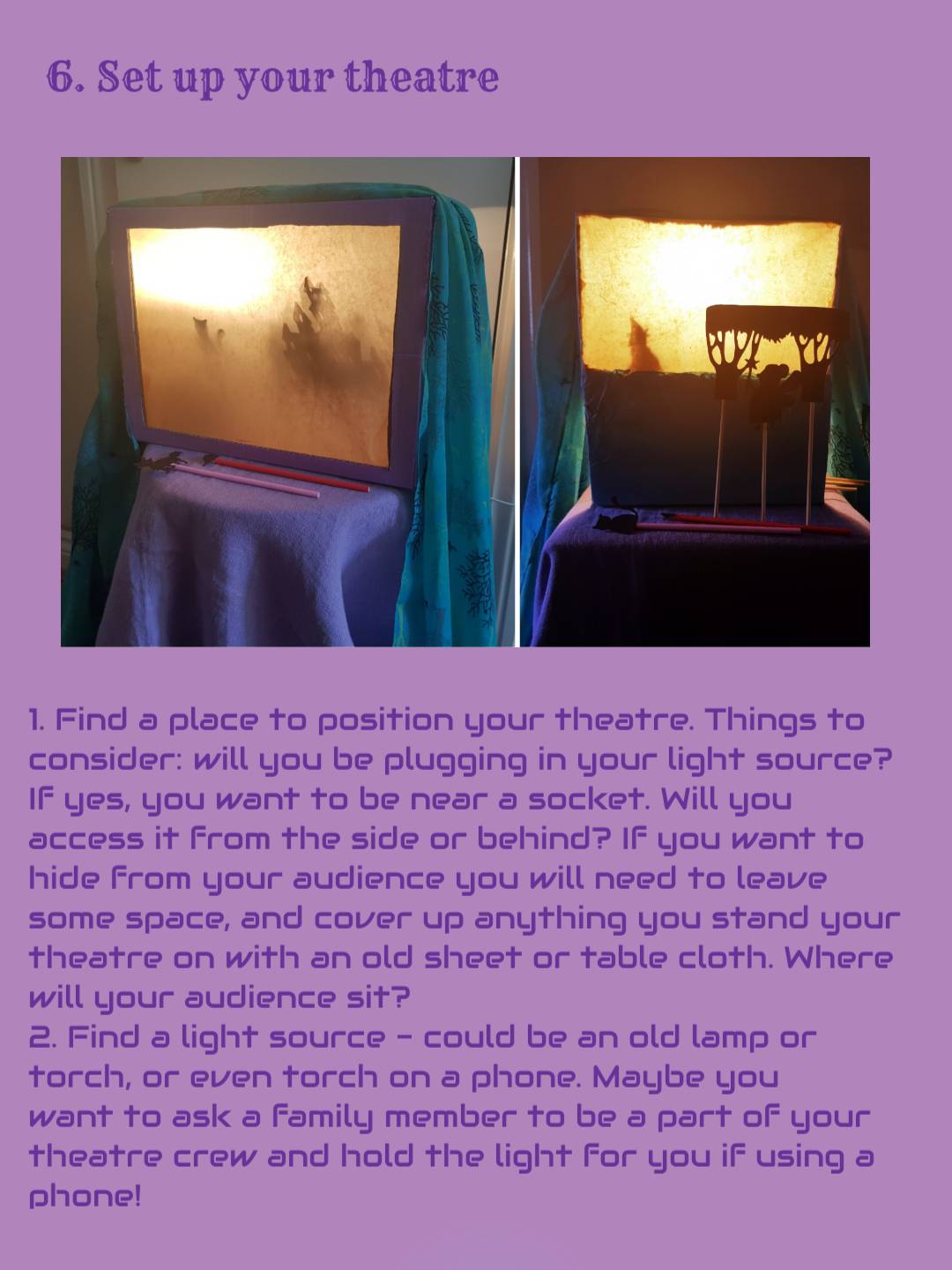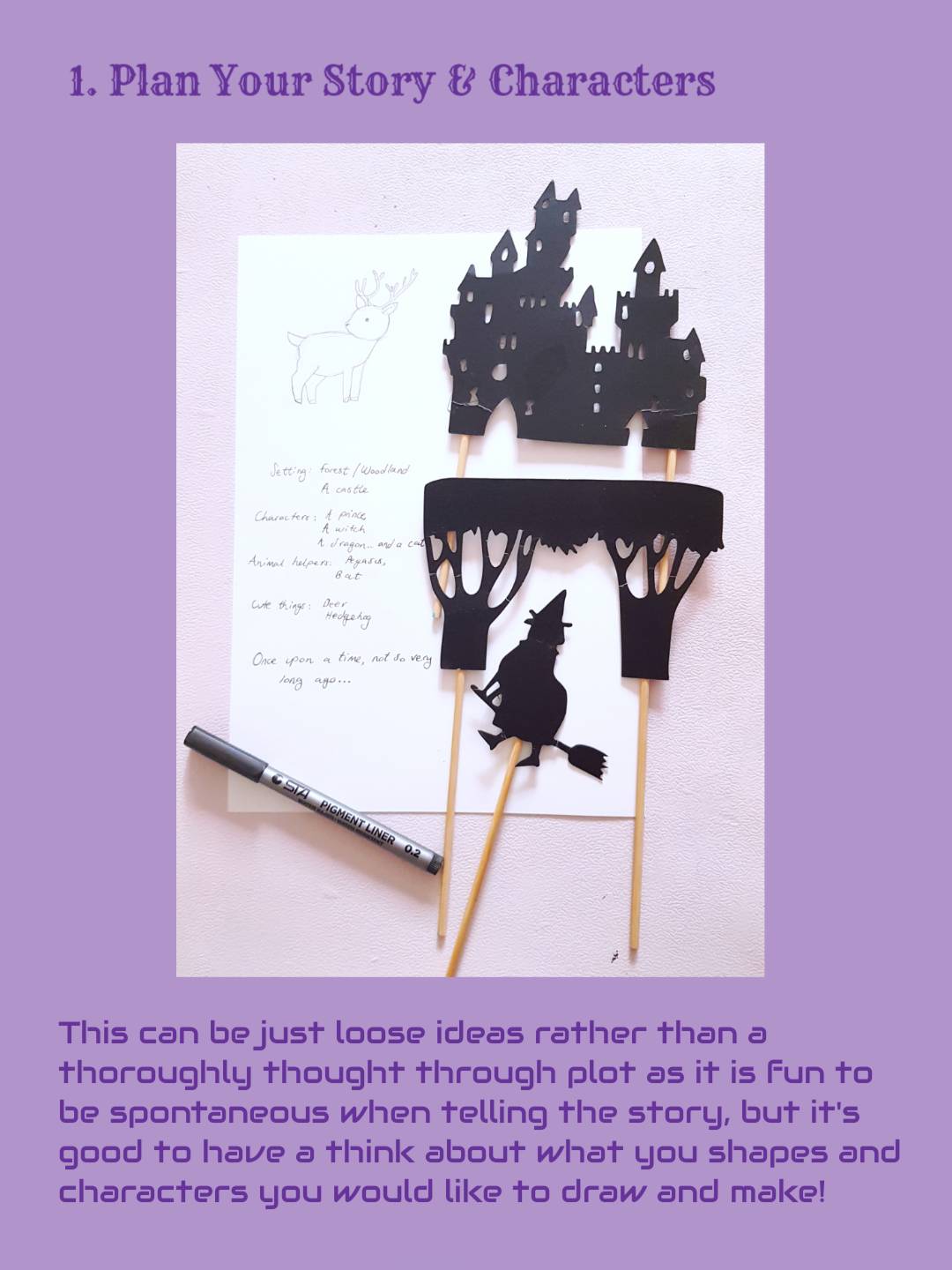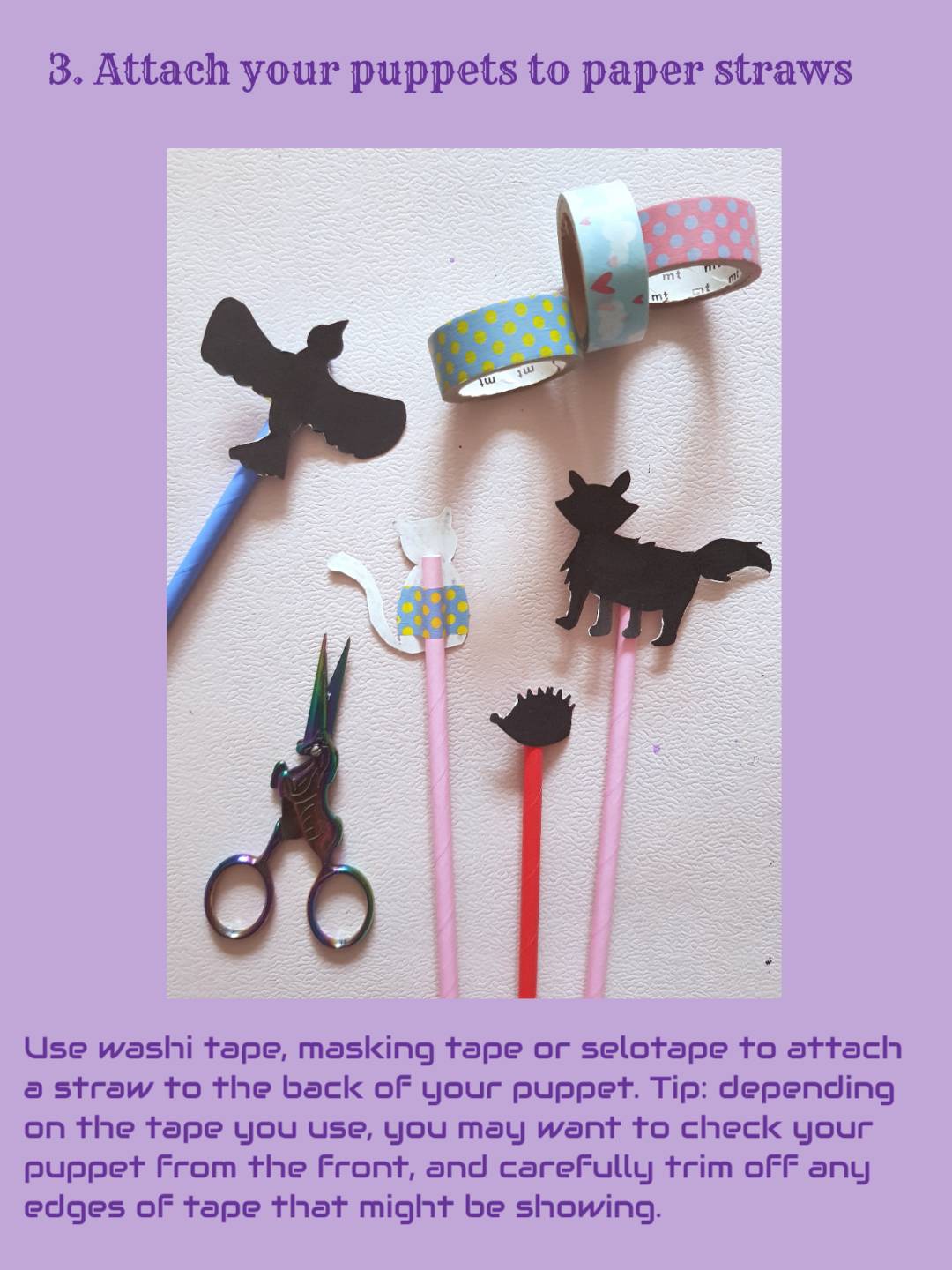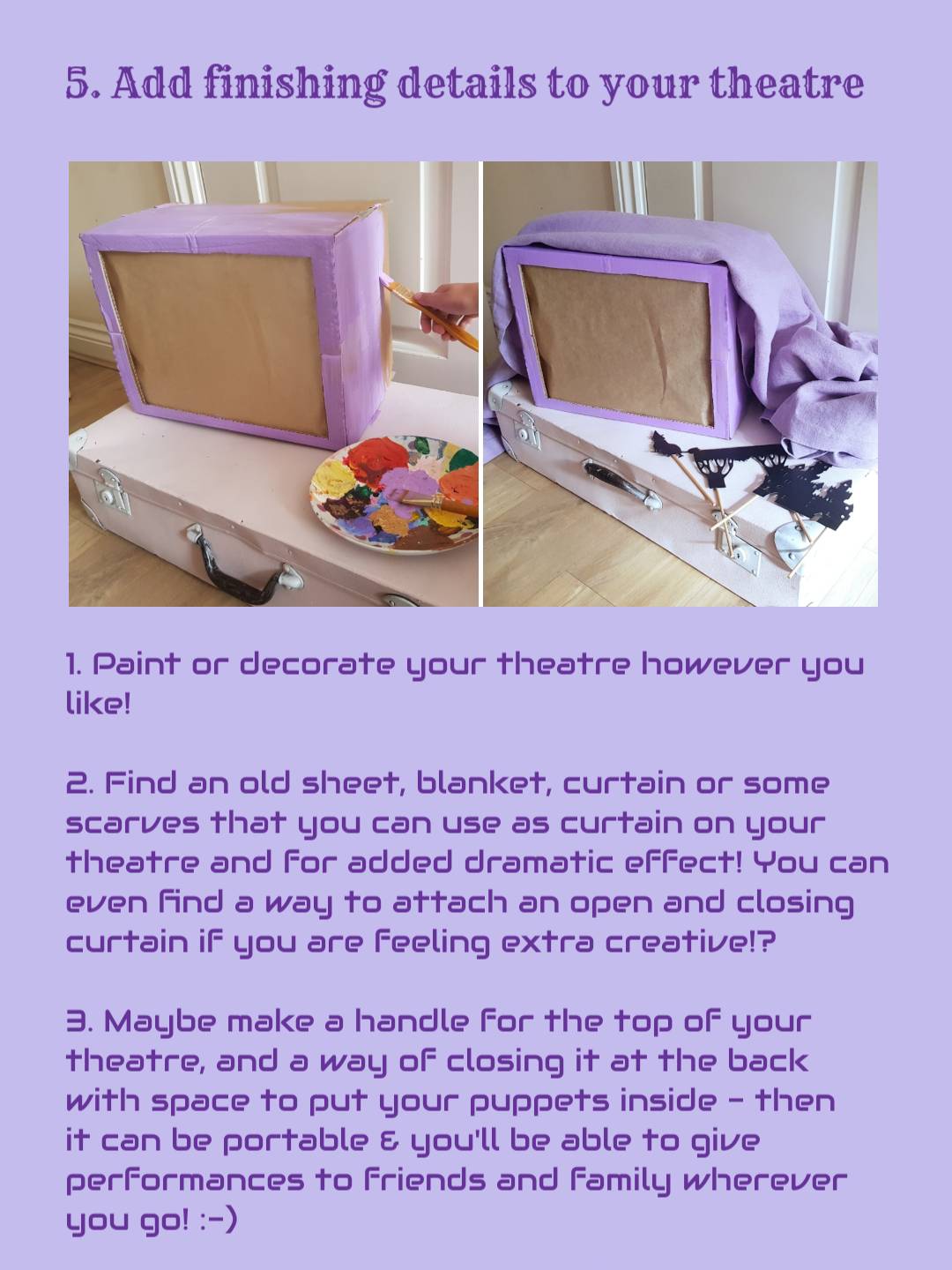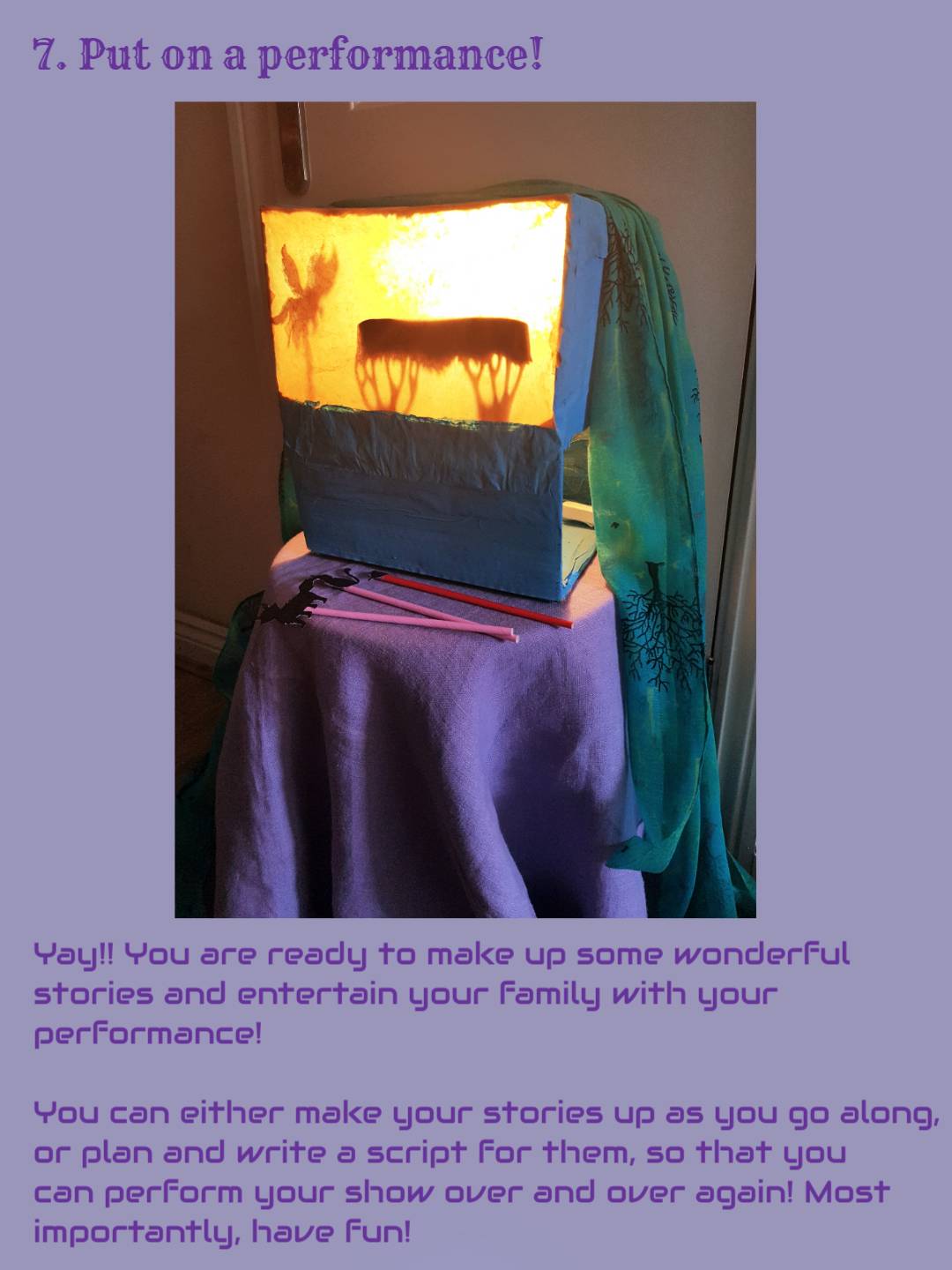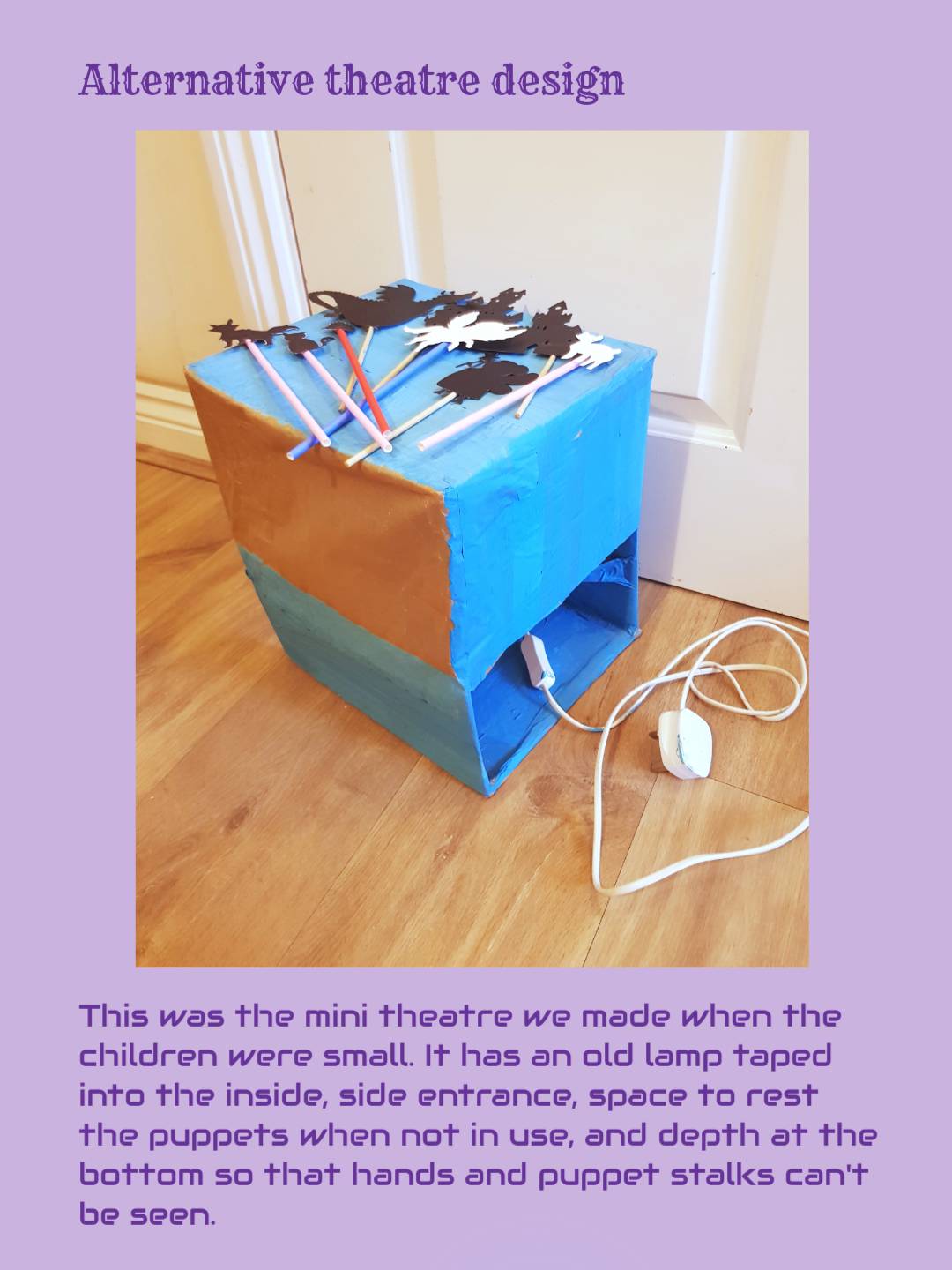The following craft tutorial is based on something that is very much an old favourite of ours, and something the children spent many hours of fun with when they were younger, and once again during the last few weeks after I dug out the very mini shadow puppet theatre that my husband made many years ago. At that time, we used a set of Moulin Roty shadow puppets, that the children had been given one Christmas, and then had the idea to construct our own mini theatre. As well as the theatre being quite simple to make, it’s also very easy to make your own shadow puppets, either to create an entire set of characters from scratch, or to add extra characters to an existing pre-bought set.
With September here, I thought this could be a lovely craft to explore now that many folk are back to various forms of school and work and as the light dwindles and the nights begin to draw-in. Playing with story-making in this way can be a lovely creative addition to the more formal work around writing, reading and stories in education, and as the summer fades, playing with light and shadow can add a lovely touch of magic to the evenings, keeping the spirit of play alive a little while longer…
Storytelling is also a wonderful way to make sense of experience. For this month’s blog, we wanted to share a story (created mainly by my daughter) told with the shadow puppets and indeed it is possible to see familiar themes of the last few months played out in the story: the castle gets burned down and it seems everything once familiar and known is lost (think: coronavirus/global pandemic), but time moves on, the king finds a safe place for his family to seek shelter (lockdown) – in a place of abundant nature (it was widely reported that the natural world was thriving when our human activity slowed down) – and in the end, they discovered that the castle had been burned down by mistake, the dragon was friendly, and everyone was OK (making it through to the other-side of lockdown, emerging again, having adjusted to the initial perceived threat). Of course, this is not necessarily a literal translation of the story! Made up by my daughter with her usual exuberance, and – especially for her – it functions entirely on its own at the level of the story itself. This is just one possible way of looking at it (and I am always wary of over-interpreting and reading too much into the stories my children make up). One thing I do know however, is that they find great enjoyment in making up stories, and it can be a way for them to gently explore and make sense of their experiences in the world by playing them out.
The shadow puppet theatre could also be used to tell bedtime stories, and maybe explore healing stories. The book Healing Stories for Challenging Behaviour, by Susuan Perrow is a lovely introduction to healing stories.
To get you started with your story and the characters you might make, you may want to think about these few simple ingredients: simple structure – beginning, middle, end, challenge and resolution. Think of the characters – main character, a friendly helper (often an animal or mythical creature), some sub-characters that help the plot, and of course, a setting for your story.
If you would like some help getting started with drawing your characters – you could use a drawing aid such as these references in the Kawaii drawing introduction (I used the book Kawaii: How to Draw Really Cute Stuff to help me with my characters). Or you can just invent your own and draw free-hand as my daughter did.
I hope you enjoy some story-making magic with this activity and happy crafting!
© Abigail Cole 2020
For more creative ideas visit www.forgetfulfairyartstudio.com
Help us to continue support to all neurodiverse families and individuals
During these challenging times PowerWood facilitates access – also to non-members – to all information, tests, strategies and tools.
PowerWood offers to (self)-isolating families understanding, simple tools and strategies that enable us and our children to support ourselves and our children through emotional overwhelm. If you enjoy reading the articles please support PowerWood by becoming a PowerWood Community FreeBee or Friend member. Thank YOU!

